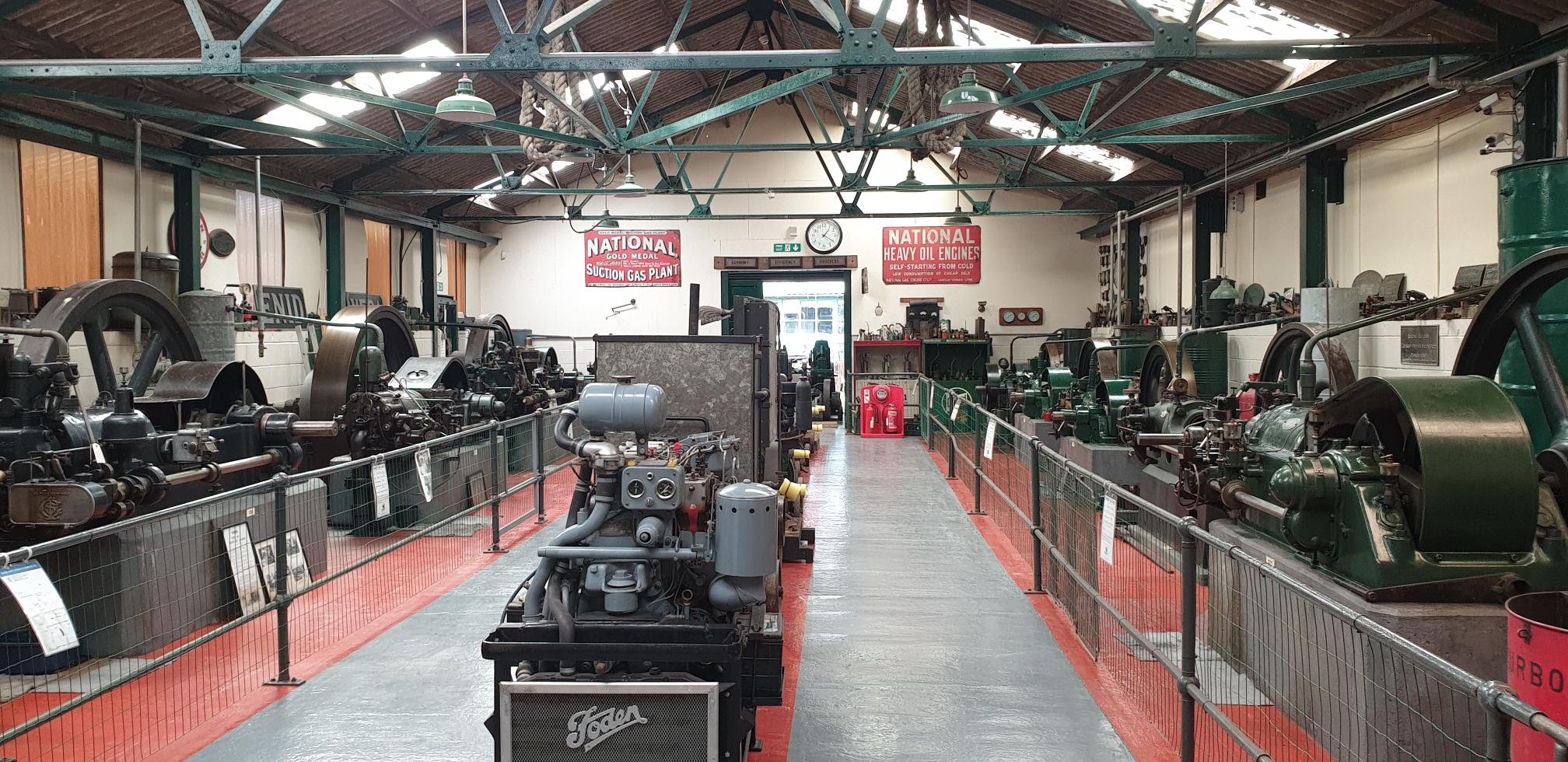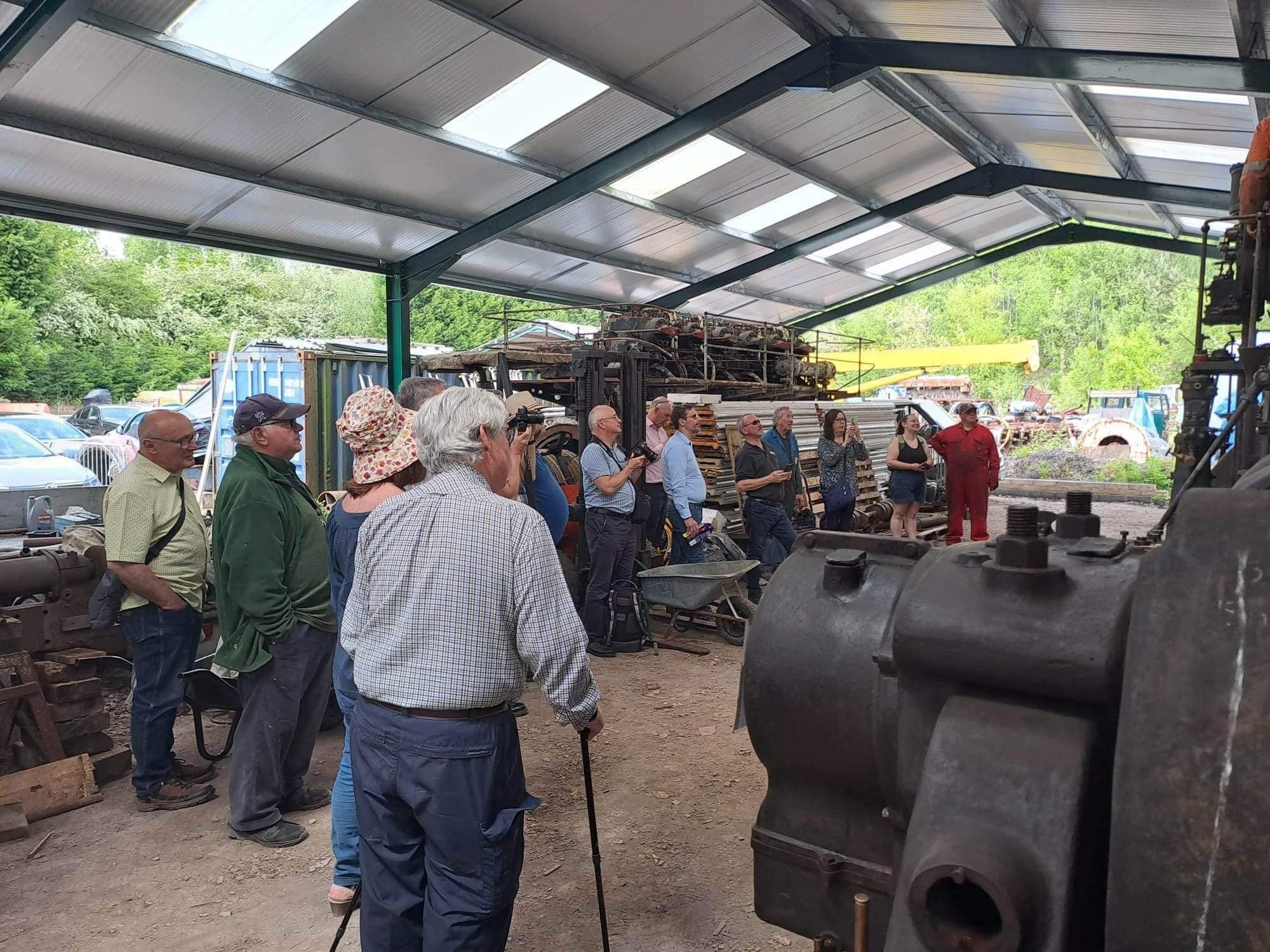
The National Gas and Oil Company
In 1889, The National Gas and Oil Engine Company, Ltd., was founded by Mr H. N. Bickerton who after being in business for some time as an engineer, ventured into the realms of horizontal gas engine manufacture. For this purpose he tool over a works in Wellington Rd formerly occupied by Isaac Watt Boulton for building locomotives. Export trade commenced in 1894, when the first gas engine went to France.
As the years went by, extensions were put in hand at Wellington Rd. Offices were built and new bays erected. These included an Iron Foundry, Drawing Office, Pattern Shop, Shipping Departments etc.
The engines were designed originally to run on town's gas and a later development was the gas producer plant using anthracite, coke and waste fuels such as wood, cotton seed etc. The introduction of the gas plant increased enormously the demand for gas engines, as they not only proved to be the most economical power available at the time but combined engines and gas plants could be installed anywhere in the world where solid fuel was available from which the gas could be extracted. In the early part of the century, many hundreds of gas producer plants and engines were shipped to all parts of the world. In the year 1906, a new type National gas producer was exhibited at the Royal Agricultural Show, Derby, and was awarded the gold medal.
By 1908, the demand for small horizontal gas engines was diminishing rapidly due to competitionfrom the electric motor and in that year, work was commenced on building a new block of bays at the west end of the works for the manufacture of vertical tandem gas engines up to units of 2,000 b.h.p. with 12 cylinders having a bore and stroke of 26in x 24in. Many installations of 10,000 b.h.p. or more were laid down at collieries, iron and steel works etc., for running on blast furnace and coke oven gases. This new section of the works was equipped with special machines for carrying out this operation.
In 1914, National installed the first sewage gas engine at the Birmingham, Tame and Rea Drainage Board's works, and from that date supplied more sewage engines in the British Empire than any other firm.
During the 1914-1918 war the Company undertook, among other contracts, the building of Y-type 12 cylinder engines for high-speed naval craft. In addition a great number of engines were supplied to various factories sponsored by the Ministry of Supply.
With the advent of the compression ignition engine the National Compnay developed this branch of the business. Previously , oil engines had been confined to the hot-bulb or hot-spot type and they now embarked on the compression ignition types, beginning with horizontal engines. Very quickly, a large order book was built up for these units. Concurrently, the vertical engine department developed vertical engines with up to 17in diameter cylinders by 21 in stroke. These were subsequently extended to give outputs up to 2,000 b.h.p. utilising turbo-pressure-chargers.
Although the compression ignition engine gradually replaced the gas engine, National were still the leading manufacturers of gas engines for special purposes such as oil fields and sewage works where natural and sludge gas were available.
In 1938, the National Company produced the first dual-fuel engine capable of running on either oil or gas or a combination of both. Many engines of this type were supplied and a typical example is the Rickmansworth works of the Colne Valley Sewage Board where there are six dual-fuel engines, each developing 1,000 b.h.p. when pressure charged on oil fuel and 660 b.h.p. when using gas.
During the 1939-1945 war, the National Company supplied vast numbers of engines to Government requirements. In addition, contracts were undertaken for the manufacture of jigs for the Manchester and Lancaster bombers, hydraulic recuperators for 25 pounder guns, and groups of machines were laid down for the manufacture of blade adaptors for the Rotol variable pitch propellor and also for machining propellor hubs.
In 1946, the task of reverting to normal business conditions resulted in a works reorganisation and the obsolescence of such machinery as had been installed especially for war work. A great many orders flowed in for both horizontal and vertical engines and production was speeded up to cope with this demand.
In 1949, the Company became associated with the Brush Group. New methods of manufacture on high output lines resulted in a remarkable increase in the production of both horizontal and vertical engines.
In 1952, the policy of the Company, following the trend of world requirements, was to concentrate on vertical engine production and industrial units from 62 to 2,000 b.h.p., marine auxiliary units from 41kW to 1390 kW and marine propulsion units from 77 to 1,880 b.h.p. were constructed.
To be continued…





